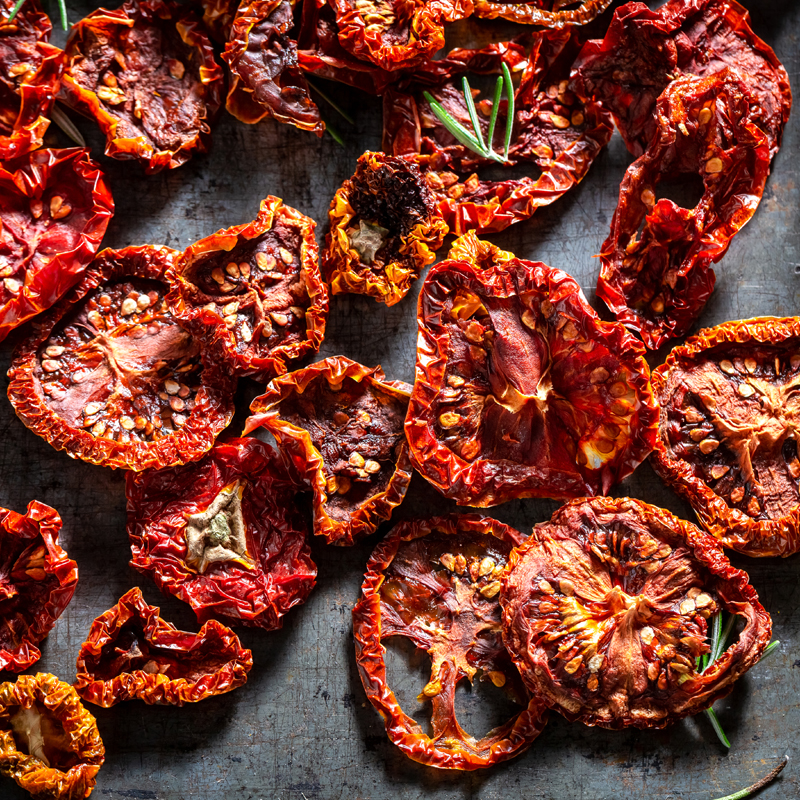
100 gr |
-- |
|
|---|---|---|
| Carbohydrate (gr) | 15.04 |
4928.47 |
| Protein (gr) | 3.59 |
1176.23 |
| Fat (gr) | 12.46 |
4083.43 |
| Fiber (gr) | 1.36 |
445.97 |
| Cholesterol (mg) | 14.64 |
4795.8 |
| Sodium (mg) | 325.27 |
106557.75 |
| Potassium (mg) | 392.16 |
128471.4 |
| Calcium (mg) | 78.15 |
25603.27 |
| Vitamin A (mg) | 46.04 |
15084.01 |
| Vitamin C (mg) | 6.16 |
2019.31 |
| Iron | 0.62 |
203.1 |
The tomato, a vibrant red fruit often classified as a vegetable in culinary contexts, is known for its juicy texture and aromatic flavor. Native to South and Central America, tomatoes were introduced to the rest of the world during Spain’s colonial period. Today, various types of tomatoes are cultivated globally, making them a staple in kitchens worldwide. Despite its botanical classification as a fruit due to its seeds, tomatoes are commonly referred to as a vegetable due to their culinary usage.
Calories in dried tomatoes are 258 calories per 100 grams.
Tomatoes are rich in essential nutrients, including:
Sun-dried tomatoes are particularly prized for their intense flavor and concentrated nutrients:
Tomatoes come in a range of sizes, colors, and flavors, including cherry tomatoes, heirloom varieties, and Roma tomatoes. They thrive in well-drained soil and sunny conditions, making them a versatile crop in diverse climates.
While botanically a fruit, tomatoes are legally classified as a vegetable in many countries for trade purposes, as determined by a U.S. Supreme Court ruling in 1893.